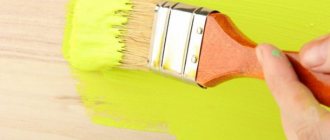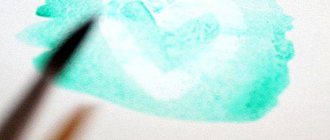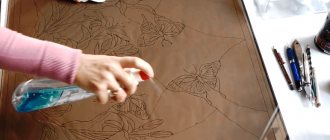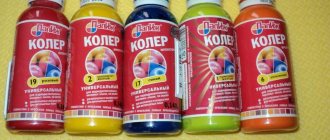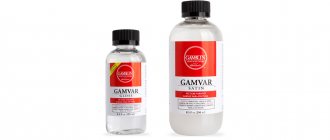Versatile, vibrant and affordable acrylic painting is what you need definitely a must try!
Acrylics are quick-drying paints that can be used straight from the tube, like oil paints, or thinned with water, like watercolors. They offer the artist a wide range of textures, colors and techniques. Acrylics are affordable, making these paints ideal for covering large areas (like posters). Because these paints are opaque and dry quickly, they are forgiving. They don't smell. Once dry, they are not afraid of water. They are just great to work with!
Acrylic is buttery and smooth and blends onto the canvas almost like oil. After drying, you get a plastic surface, the paints do not crack.
Every artist has their favorite brand of acrylic and other paints, find something you enjoy working with.
Important assistant
It is customary to pay a lot of attention to brushes, and this is not surprising, because it is with them that you will create your masterpieces! That's why I tell you so carefully how to choose, store and care for these furry helpers.
In general, I believe that an artist should have many brushes. What does it have to do with the most different ones! After all, you never know what kind of brush might come in handy if you love to draw. Acrylic, oil, watercolor, arts and crafts, as well as glue, primer, varnish - for all this you need your own special brush, or better yet several.
Don't skimp on brushes, but rather choose them wisely!
But today we will talk about which brushes are best suited for acrylic paints. After all, as with any other paint, not all brushes and not all materials are suitable for acrylic. Of course, if you want, you can paint with any brush at all, but this will either significantly complicate the whole process, or simply ruin the brush.
So, let's figure it out so as not to make a mistake with the choice.
By purpose
This includes brushes for watercolor and nail design, for gilding and stenciling, for makeup and body painting, for acrylic and oil, for calligraphy and graphics, and many others. It is important for us to find our group - for acrylic and oil, or just a group of brushes for oil paints. There is no task to embrace the immensity and talk about all the differences, the main thing is that there is a clearly defined segment and, believe me, a very large selection even within this group. Again, by choosing from this group, you will get maximum durability of the brush and will not be frustrated by rapid abrasion or hair loss.
Basic materials for brushes
All materials for modern painting brushes are divided into 2 types: natural and artificial.
Natural brushes include brushes made from squirrel, kolinsky, pony, goat, sable, and pig bristles, while artificial brushes include synthetic and nylon brushes.
The best brushes for acrylic paints are, of course, artificial bristles, namely nylon and synthetics.
This is due to the fact that brushes made of natural bristles are very delicate, and the composition of acrylic paints is not so gentle, plus, most likely, you will resort to using paint solvents, and this is an additional chemical load on the bristles.
But even to the rules there are exceptions. That is why brushes made of kolinsky wool, as well as bristles, are suitable for using acrylic paints.
The bristle of Konoko's brush is quite thin, but elastic and soft. These brushes are very convenient for applying paint to small details of a painting.
Speakers from Nevskaya Palitra
Bristle brushes are made from pig ear hair, which is why they are so stiff. Unlike the soft and delicate squirrels and kolinka, the bristles of these brushes do not bristle, do not get out of the general bunch, and they are also very elastic.
Bristle – hard brushes made of natural bristles
Also, unlike a column, bristles are inexpensive and, if they suddenly become unusable, they can always be replaced. By the way, bristle brushes perfectly absorb thick paint and are very convenient for applying it evenly layer by layer.
But still, synthetic brushes for acrylic paints will be better, since they are not so sensitive to the chemical composition of the paint.
Synthetic brushes are similar to Kolonok brushes, only they are stiffer and more elastic, and even less expensive and are sold in any store. They are great for depicting straight lines, drawing small details, or, if the brush is wide, filling the surface of the canvas with paint.
Synthetic brushes made from nylon are also great for painting with acrylic on canvas. They are elastic, hard, hold paint well and do not give off water at all (which will hinder you if you take up watercolors with this brush).
Synthetic brushes are also very easy to care for, since they do not require such careful treatment as, for example, natural bristle brushes.
This is what synthetic brushes look like after several years of use.
Of course, if you use brushes every day, any brushes, even the most unpretentious ones, will wear out. Therefore, artists still have to update their arsenal of brushes. But don't worry, if you plan to paint occasionally, or a few times a year, a small set of brushes will last you for several years to come!
You can learn more about brushes and other materials for painting at my master class on the theory of oil painting, registration for which is FREE. We won’t paint on it, but we will discuss in great detail everything related to working with oils! And after the master class, I will give you a free lesson on painting the “Starry Sky” painting, so that you can immediately try out the knowledge you have acquired
Register for the master class using the link - https://nyschool.ru/reg_artmk?utm_source=seo&utm_medium=blog&utm_campaign=allseo
Use Gesso as a base
"Gesso" is a white primer that is applied to canvas as a base for acrylic or oil paints.
"Gesso" is a white primer that is applied to canvas as a base for acrylic or oil paints. It should be applied in a thin layer to a non-greasy surface (canvas, paper, wood, plaster, etc.). The primer dries quickly, creating a light matte surface that improves the adhesion of acrylic or oil paint layers. "Gesso" for acrylic is a little different from the usual one, as it contains latex. You can also use Gesso to create the desired texture under the paint.
Brush shapes for acrylic painting
Many beginning artists get so focused on the content that they completely forget about the shape of the brush! But it can either help you paint a picture or ruin it, or make it difficult to paint if you choose the form inappropriately.
Flat-shaped brushes are usually used by artists to paint over the canvas, fill large pieces, sometimes with a single color. These brushes come in both wide and narrow sizes, but more on that later.
The second most popular are round brushes . Choosing a round brush for acrylic is not difficult: this is a universal type of brush, take any, you can’t go wrong.
Oval brushes are a cross between a round and a flat brush and are somewhat reminiscent of a cat's tongue. It is convenient to write with such a brush, since it combines different properties, but it is still better to practice on the first two first.
What other brushes can you use to paint with acrylic? In principle, brushes of any shape are suitable for acrylic painting, since much will still depend on the artist’s creative intent. A flute brush will be very convenient to use – it is a flat and wide brush.
Painting brush size
The larger the number on the handle of the brush, the larger the brush itself will be! The numbering can be from the numbers 00 and even goes up to 40, in some cases, numbers.
Wide paint brushes will definitely come in handy, for example, when creating interior paintings with acrylic paints
Of course, as with the shape, the size of the brush will depend on what and how you plan to write with it. Choosing an acrylic brush by size is not at all difficult if you know exactly what you will be painting.
If you want to make it as convenient as possible for yourself and your creativity, then I advise you to buy several brushes. Let these be small, small brushes from 0 to 2, a couple of medium-sized brushes 4-6, and one or two large brushes for filling the entire surface of the canvas with monochromatic paint.
In total you will get:
— a small brush for drawing small details;
- average for main work;
- large for filling volumetric parts of the canvas or filling.
But remember that the size of brushes may differ from different manufacturers and even from different materials, therefore, it is better to choose everything at once and in one place, so that there is no confusion later.
One size -4, but different sizes of nylon tassels
And, of course, you should pay attention to the size of the handle. Balance is important here, because too long, exactly, as well as too short, can tire your hand, and in general it can be inconvenient to paint a picture.
Therefore, it is also better to focus on the average size for the length of the handle.
The best paint brushes for perfect painting with mixed bristles
Color Expert
A German flute brush will eliminate defects that arise during finishing. Also suitable for painting walls and ceilings. As a result, the surface acquires a glossy tint. The small bristles are held in place by a metal plate. The mixed bristles have good holding qualities and evenly distribute the paintwork.
brush Color Expert
Advantages:
- convenient hook for fastening above the container;
- picks up a large amount of paint;
- does not leave streaks;
- easy to clean with solvent.
Flaws:
- wears out quickly.
Boldrini Karma Penello Vel Pen
Many will be interested in its small and compact size. Mixed bristles are attached to the wooden handle. It is designed for working with decorative paints (with sand or insoluble flocks). The unique shape makes it easy to control pressure when pressing. Due to the narrow working part, it is convenient to process hard-to-reach places.
Boldrini Karma Penello Vel Pen brush
Advantages:
- unique shape;
- wooden handle;
- made in Italy.
Flaws:
- a specific highly specialized tool.
Hardness of painting brushes
Yes, brushes are also differentiated by their hardness. For acrylic, brushes of any hardness will suit you, but it’s better if you know how they differ.
Soft brushes , as you might have guessed, are made from natural bristles. The very same favorite kolinsky is also a soft brush. These are suitable for a small amount of work, for example, for filling in small details in a drawing.
Hard brushes allow you to create clear, rough, impasto strokes, as they hold paint well. What hard brushes are needed for acrylic paints? First of all, this is stubble, of course. Synthetics are not inferior to it either. Stiff and elastic, such a brush will become an indispensable assistant, for example, in impasto painting.
Checklist for beginning artists: how to choose brushes for acrylic paints
Follow these rules and you will definitely not leave the store empty-handed:
- Check the metal clip - it should be well attached to the handle;
- Look at the pile - it should lie flat, hair to hair and not bristle;
- If the store has such an opportunity, ask the seller to check the brush in use; perhaps they have tester brushes. And if this is not possible, you can always order high-quality brushes in my online store;
- Just hold the brush in your hands and imagine how you paint a picture with it. Are you comfortable holding it? Then feel free to take your new brush to the checkout!

